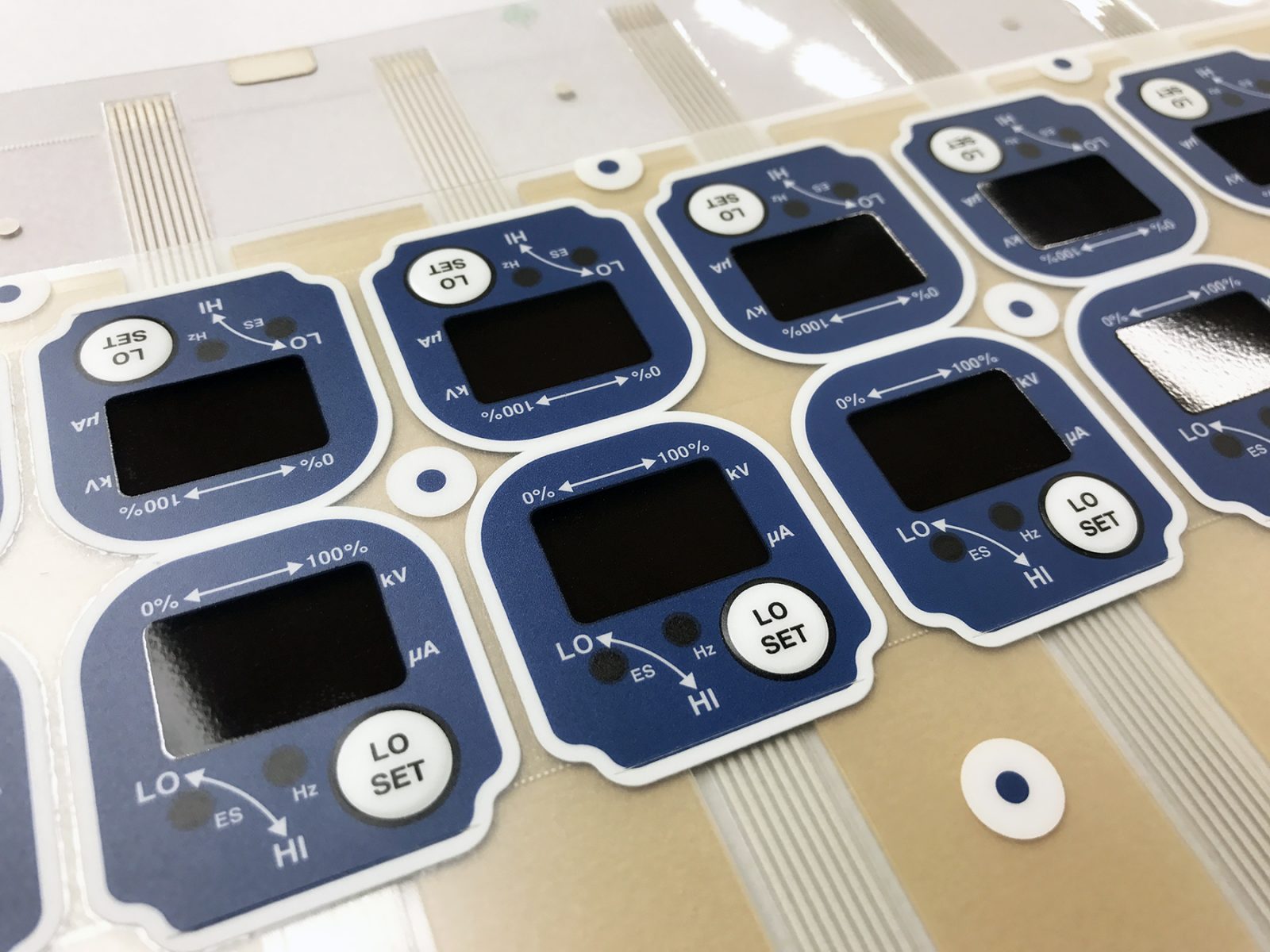How to Make Certain Longevity and Dependability with a High-Quality Membrane Switch
How to Make Certain Longevity and Dependability with a High-Quality Membrane Switch
Blog Article
Understanding the Capability of Membrane Changes for Interface Tools
The functionality of membrane switches over represents a substantial development in user interface design, integrating efficiency with visual versatility. These buttons operate through a multi-layered framework that translates customer interactions right into electric signals, permitting both small designs and strength against ecological elements. As industries increasingly prioritize user experience, comprehending the subtleties of membrane button technology ends up being necessary. What ramifications do these improvements hold for future applications, and how might they redefine customer interactions throughout different tools?
What Are Membrane Layer Buttons?
Membrane buttons are innovative user interface devices that help with individual interaction with electronic tools. These versatile parts include multiple layers, including a visuals overlay, spacer, and a published circuit layer. The design enables for a smooth assimilation into different digital tools, improving both the visual and useful elements of individual interfaces.
Membrane switches are typically utilized in a large range of applications, from family home appliances to industrial machinery and medical devices. Their building commonly includes a slim account, making them an ideal option for compact styles. The responsive feedback offered by these buttons can be engineered to satisfy specific individual preferences, making certain efficient communication between the user and the gadget.
Longevity is one more substantial benefit of membrane switches, as they are resistant to dirt, dampness, and chemicals, which enhances their life expectancy in requiring settings. Furthermore, these switches can be tailored in terms of form, size, and graphic style, permitting branding and user-specific attributes. Overall, membrane layer changes stand for a practical solution for enhancing customer experience in digital devices, integrating performance with aesthetic charm in an efficient fashion.
How Membrane Switches Work
Operating on a straightforward concept, membrane layer switches use a split construction to register customer input successfully. Each button includes numerous layers, consisting of a printed circuit layer, a spacer layer, and a leading visuals layer, which are created to work with each other effortlessly. When an individual presses the top layer, it compresses the spacer layer, bringing the conductive components of the circuit layer into contact with each various other.
This contact produces a shut circuit, signaling the tool to implement a certain function. The style permits different configurations, including tactile comments, which can boost the individual experience by providing a physical experience upon activation. The materials utilized in membrane layer buttons typically consist of versatile substrates, such as polyester or polycarbonate, which ensure durability and resilience against wear and tear.

Secret Advantages of Membrane Layer Switches

Another substantial benefit is their compactness. Membrane buttons are slim and lightweight, which enables suppliers to conserve room in their gadgets without compromising performance. This function is especially advantageous in applications where weight and quantity are important considerations.
Furthermore, membrane layer switches are resistant to dirt, wetness, and chemicals, enhancing their toughness. This durability prolongs their life expectancy and lowers the requirement for frequent replacements, causing expense savings over time.
Furthermore, the responsive comments provided by membrane buttons can be enhanced to enhance individual interaction. They can consist of functions such as elevated buttons or audible clicks, improving use and individual experience.
Applications Across Industries
Interface gadgets making use of membrane layer buttons prevail in a wide click here to find out more selection of sectors, showcasing their adaptability and capability. Membrane Switch. In the medical industry, membrane layer buttons are important to gadgets such as analysis devices and person surveillance systems, where their durability and simplicity of cleaning are essential for keeping hygiene requirements. Likewise, in the vehicle industry, these switches are used in control panel controls and infomercial systems, offering a sleek and contemporary interface for users.
Furthermore, the consumer electronics field gain from membrane layer buttons in home appliances and portable gadgets, where compact layout and straightforward webpage user interfaces boost customer experience. Industrial applications additionally leverage membrane switches over for control panels in equipment and automation systems, emphasizing their robustness and resistance to rough environments.
In the aerospace and protection sectors, membrane switches are used in cockpit controls and tools, where integrity and efficiency under extreme conditions are vital. In addition, the gaming industry significantly includes membrane layer buttons in controllers and gallery makers, adding to an engaging customer experience. On the whole, the convenience of membrane changes allows their extensive usage throughout many markets, emphasizing their value in modern interface layout.
Future Trends in Membrane Layer Change Innovation

In addition, using advanced materials, such as polycarbonate and polyester films, is expected to climb, providing boosted longevity and resistance to ecological stressors. These materials add to the overall longevity of membrane layer switches, making them suitable for harsher industrial applications.
In addition, the incorporation of smart innovation, including IoT connection, will certainly make it possible for membrane layer switches to interact with other tools and systems, promoting a much more interactive user experience. This trend lines up with the expanding demand for wise gadgets across numerous fields, from medical care to consumer electronics.
Last but not least, customization alternatives are expected to broaden, permitting manufacturers to develop bespoke options tailored to details customer needs and choices. These advancements will position membrane buttons as necessary parts in the advancement of interface innovation.
Verdict
Finally, membrane switches over represent a crucial improvement in interface innovation, providing a reputable and flexible service for diverse digital applications. Their layered construction helps with small layout, while attributes such as tactile comments improve customer interaction. The resilience versus ecological elements additionally solidifies their energy across numerous markets. As advancements in product scientific research and touch picking up innovations continue, the capability and applicability of membrane buttons are anticipated to increase, enhancing their relevance in contemporary electronic gadgets.
Report this page